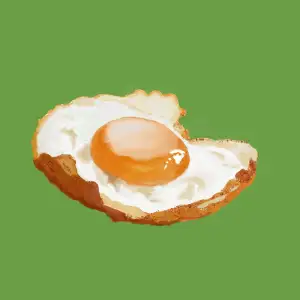The Surprising Effects of Eating Corn Starch: Unveiling the Truth Behind Pica and its Health Implications

Corn starch, a fine white powder derived from the endosperm of corn kernels, is commonly used as a thickening agent in cooking and baking. However, it may come as a surprise that some individuals have developed a peculiar craving for eating corn starch on its own. This unusual behavior, known as pica, has raised concerns among health professionals and researchers. In this article, we delve into the surprising effects of consuming corn starch and shed light on the truth behind pica and its potential health implications.
Understanding pica and its association with corn starch consumption
Pica is a disorder characterized by the persistent craving and consumption of non-food items. While pica can involve various substances, such as dirt or ice, one common association is with the consumption of corn starch. This behavior often stems from nutritional deficiencies or underlying health conditions. Individuals with pica may find comfort in the texture and taste of corn starch, leading to its frequent ingestion. However, it is crucial to understand the potential health risks associated with this habit.
Potential health risks of eating corn starch
While corn starch is commonly used as a thickening agent in various culinary preparations, excessive consumption can lead to several health risks. One of the primary concerns is the risk of developing pica, a disorder characterized by cravings for non-food substances. Consuming large quantities of corn starch can trigger pica, leading individuals to consume other non-nutritive substances such as dirt or ice.
Furthermore, consuming excessive amounts of corn starch can contribute to weight gain and obesity due to its high carbohydrate content. This can increase the risk of developing chronic conditions such as diabetes and heart disease. Additionally, corn starch lacks essential nutrients like vitamins, minerals, and fiber, which are crucial for maintaining overall health.
Moreover, overconsumption of corn starch may lead to digestive issues such as bloating, gas, and constipation. This is because the body struggles to break down and digest large amounts of pure starch without any accompanying fiber or nutrients.
It is important to note that while occasional consumption of small amounts of corn starch may not pose significant health risks for most individuals, it is crucial to exercise moderation and balance in one's diet.
Nutritional value of corn starch
Corn starch, derived from the endosperm of corn kernels, is primarily composed of carbohydrates. It is a rich source of energy, providing approximately 30 grams of carbohydrates per serving. However, it lacks significant amounts of other essential nutrients such as protein, fiber, vitamins, and minerals.
While corn starch does not offer much in terms of nutritional value, it plays a crucial role in cooking and baking as a thickening agent. Its ability to absorb and hold moisture makes it an ideal ingredient for creating smooth sauces, gravies, and puddings.
It is important to note that consuming excessive amounts of corn starch can lead to an imbalance in nutrient intake. Therefore, individuals who rely heavily on corn starch should consider incorporating other nutrient-dense foods into their diet to ensure they are meeting their nutritional needs.
Incorporating a variety of fruits, vegetables, lean proteins, whole grains, and healthy fats can help provide the necessary vitamins and minerals that may be lacking in a diet high in corn starch consumption. Additionally, consulting with a healthcare professional or registered dietitian can provide personalized guidance on developing a balanced eating plan that suits individual needs.
By understanding the limited nutritional value of corn starch and making informed dietary choices, individuals can maintain a well-rounded and nourishing diet while still enjoying the benefits of this versatile ingredient.
Alternatives to consuming corn starch for individuals with pica
For individuals with pica who have a craving for corn starch, it is important to find alternatives that can satisfy their cravings while minimizing potential health risks. One alternative is to consume foods that have a similar texture and mouthfeel to corn starch, such as tapioca pearls or arrowroot powder. These can be used in cooking or baking to achieve the desired consistency without resorting to consuming pure corn starch. Additionally, incorporating more nutrient-dense foods into the diet can help reduce cravings for non-nutritive substances like corn starch. Filling up on fruits, vegetables, whole grains, and lean proteins can provide the body with essential nutrients and help curb cravings. It may also be helpful to seek guidance from a healthcare professional or registered dietitian who can provide personalized recommendations and support in finding suitable alternatives for individuals with pica.
Seeking professional help for managing pica and corn starch cravings
For individuals struggling with pica and corn starch cravings, seeking professional help is crucial. Consulting a healthcare provider or a registered dietitian can provide guidance and support in managing these cravings. These professionals can help identify the underlying causes of pica and develop a personalized plan to address them. Additionally, they can offer alternative strategies for satisfying cravings and ensure that nutritional needs are being met. Remember, reaching out for professional help is an important step towards promoting overall health and well-being.
In conclusion, while eating corn starch may provide temporary satisfaction for individuals with pica, it is crucial to consider the potential health risks associated with this behavior. Instead of solely relying on corn starch as a source of comfort or nutrition, it is important to promote a balanced and healthy approach to eating. Encouraging a diverse diet that includes fruits, vegetables, lean proteins, and whole grains can provide essential nutrients and reduce the risk of nutrient deficiencies. Seeking professional help for managing pica cravings is also essential in order to address the underlying causes and develop healthier coping mechanisms. By promoting education and awareness about pica and its implications, we can support individuals in making informed choices for their overall well-being.
Published: 06. 12. 2023
Category: Health



